Lisieux to Cormeilles
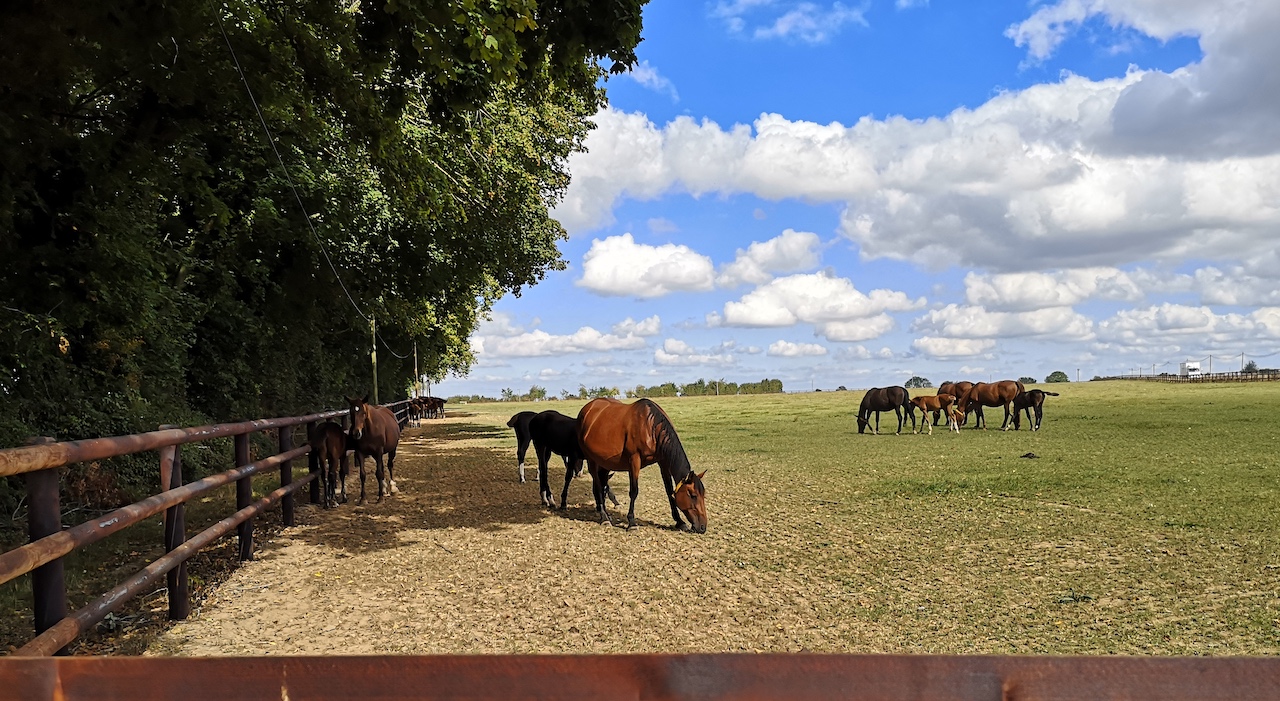
Normandie
13. Lisieux to Cormeilles
Medium
5h30
23,6km
+390m
-367m
Step
Embed this item to access it offline
Our path first crosses a part of the town of Lisieux to reach the small countryside. After crossing the river "Perdrix" the Via Columbani passes through a forest which leads us to a plateau. We walk in the middle of the fields to Cormeilles.
5 points of interest
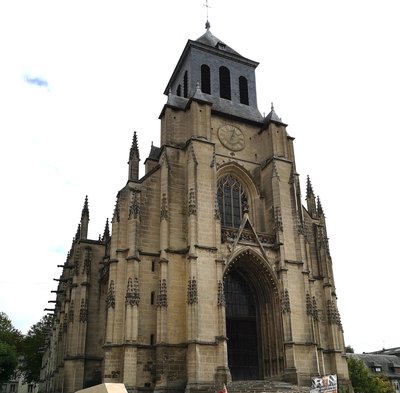
Façade de l’église Saint-Jacques à Lisieux - Amis saint Colomban TouristSaint-Jacques Church in Lisieux
The church of Saint-Jacques, begun in 1448, instead of a simple chapel enlarged in 1132, was dedicated on June 1, 1540.
As the construction was done on a slope and in the direction of the church axis, the choir is at ground level, while the facade is raised on a porch subdivided into several flights, which contributes to the embellishment of the large portal, which is crowned by a rather gloomy slate-covered bell tower, obviously unfinished.
This church is desacralized to become a cultural place open only during exhibitions or various events.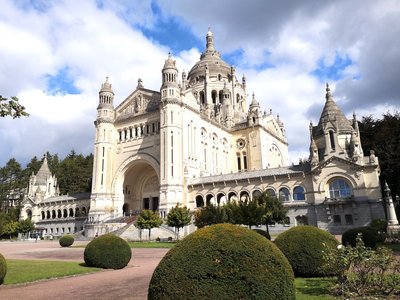
Basilique Sainte-Thérèse à Lisieux - Amis saint Colomban TouristBasilica of Saint Theresa of Lisieux
Sainte-Thérèse de Lisieux was born in 1873. She entered the Carmelite convent at the age of 15 and died at the age of 23. Doctor of the Church, patron saint of the missions, she developed a spirituality based on her deep trust in the love of a Father God.
At the end of the First World War, the surviving French soldiers came to thank Saint Therese of the Child Jesus in Lisieux. She attracted millions of believers and non-believers alike. Lisieux is the second city of pilgrimage after Lourdes.
The Via Columbani was to stop in this place of pilgrimage.
The idea of erecting a basilica in Lisieux in honour of the one who had just been canonised in 1925 met with much opposition from the local clergy. The presence of a cathedral and numerous churches in Lisieux was sufficient for the clergy. Monsignor Lemonnier, Bishop of Bayeux and Lisieux refuted the arguments of the clergy and in 1925 he sought an architect to build a sanctuary to house the relics of Saint Therese.
Pope Pius XI, who had canonized Therese on May 17, 1925, considered her the Star of his pontificate. He strongly desired the construction of a sanctuary in Lisieux.
The Basilica was inaugurated in 1937, and the work on the building, with its stained glass windows and mosaic, was completed in 1957.
More information on the site: www.therese-de-lisieux.catholique.fr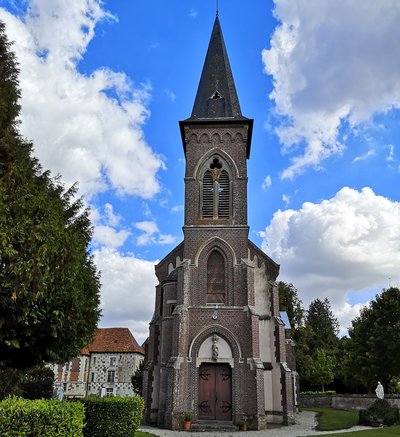
Église Saint-Germain à Hermival-les-Vaux - Amis saint Colomban TouristSaint-Germain Church, Hermival-les-Vaux
The 19th century church of St. Germain has a simple architecture with contemporary furniture. Three stone altars are installed there. The entrance is through a porch surmounted by the bell tower and the statue of Saint Germain is enthroned in a niche on the door.
This church was rebuilt in the 19th century on the site of a 12th and 13th century Romanesque church. The 19th century church of Saint Germain has a simple architecture with contemporary furniture.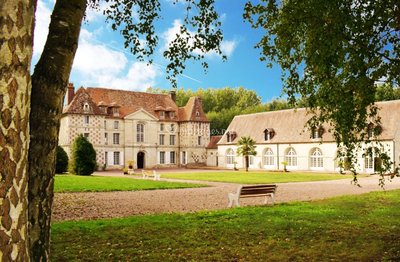
Château d’Hermival - Château d’Hermival HistoricalHermival Castle
The two square checkerboard towers of pink brick and stone were built in the 16th century. They are decorated with machicolated cornices. A second campaign, in the 18th century, allowed the construction of a cut stone façade set back from the two towers. The central part of this facade has an entrance framed with bossed pilasters (slightly protruding), a two-storey window topped by a triangular pediment. Its façades have been listed as historic monuments since 1927.
Today the castle is used for weddings and special events.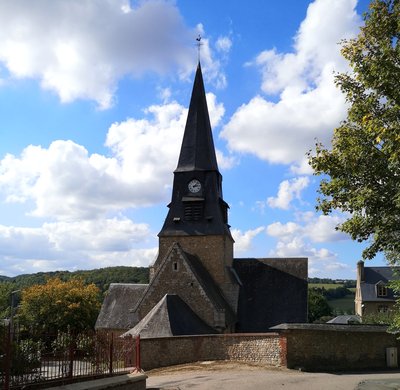
Église Sainte-Croix de Cormeilles - Amis saint Colomban TouristSainte-Croix Church à Cormeilles
The church was built in the 12th century but has been rebuilt many times. Only the turret and the south transept crosspiece remain from this period. The half-timbered chapel of the north transept dates from the 15th century. The sacristy dates from the first half of the 19th century, the southern bays of the nave were rebuilt in 1878 as well as the west façade and the north side aisle in 1882.
The church has a Latin cross plan and is oriented. It consists of two vessels: a central vessel and a northern collateral. It is divided into seven bays. Its transept is protruding. The chevet is flat but extended by an annex. The main façade with an open gable is framed by two large buttresses. The portal with two rectangular leaves is surmounted by a poly-lobed bay. The whole is decorated with pointed arch vaults. Above it are concealed pointed arch windows, surmounted by a cross on the gable top.
The bell tower stands above the cross. It has a square base with a pavilion roof topped by a polygonal spire. It is flanked by a stairway turret with a hexagonal roof.
The roof of the building with a double slope is made of slate.
Notre-Dame de Cormeilles Abbey, founded in 1055 by Fitz Osbern, a Norman baron, was destroyed in 1778. A dovecote remains.
Altimetric profile
Report a problem or an error
If you have found an error on this page or if you have noticed any problems during your hike, please report them to us here:
Close by7
- Accommodation







